The Ultimate Guide to Your Cycling Muscles
Learn about the muscles that power your pedal stroke, and how to make the most of them.
A Big Muscle Breakdown
As cyclists, we tend to be all about the quads. Those dominant muscles are indeed the patrons of the pedal pushers, but it takes a team of domestiques to keep the cranks turning out the watts.
Here’s what your most important cycling muscles look like in action, and how to train each to peak performance.
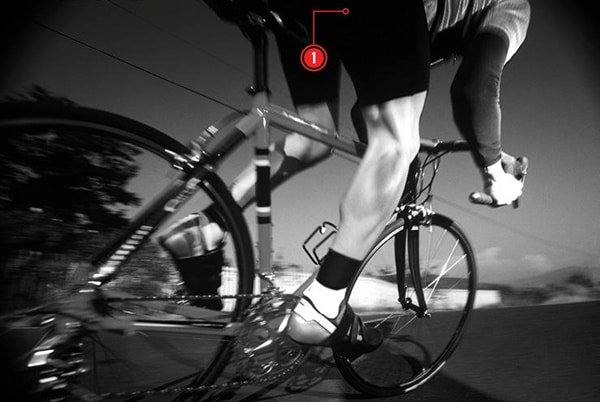
Glutes (AKA: Rear, Booty, Big House)
Your glutes are the large-and-in-charge sitting muscles, which do the job of extending your hips and producing about 27 percent of your pedaling power. They are most active at the top of your pedal stroke, as you open your hips to press those pedals down.
Train ‘em: Cyclists often have weak outer glutes, which is bad because those muscles help stabilise you in the saddle. Glute activation lunges will help:
Stand with your feet shoulder-width apart, hands on your hips. Take a giant step diagonally forward with your right leg, crossing in front of your left. Keeping your back straight, bend your knees and lower your hips toward floor until your right leg is bent 90 degrees. Push back to the start, then repeat with the other leg. That’s one rep. Do two sets of 10 to 15 two to three days a week.
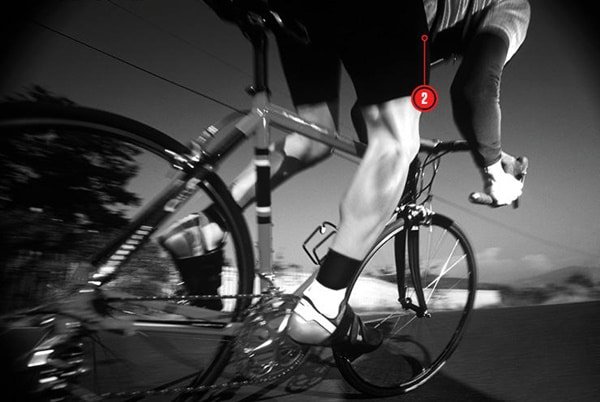
Quadriceps (AKA: Quads, Thighs, Quadzillas)
Your quadriceps, the muscles that run down the front of your legs from your hips to your knees, are your knee extensors. They produce about 39 percent of your pedalling power, and really light up as you hit two o’clock on through the bottom of the stroke. Interestingly, EMG studies show that the softer-soled your shoe, the harder your quads have to work.
Train ‘em: As the name implies, there are four quad muscles. The one cyclists prize most is the “second knee” muscle bulge that sits just above your actual knee, called the vastus medialis oblique, or VMO for short, since it helps push big gears and looks intimidating to your rivals. To develop yours (and other lower-body muscles) try planted step-ups.
Hold a dumbbell in each hand and face a bench or step about 45 centimetres in height. Step up with your right leg and, at the top of the move, contract your glutes and extend your left leg behind you. Bring your left leg back down until your left toe just touches the floor. Immediately repeat, completing a full set with one leg. Then switch legs.
Read: Quadzilla! 3 Moves To Power Legs
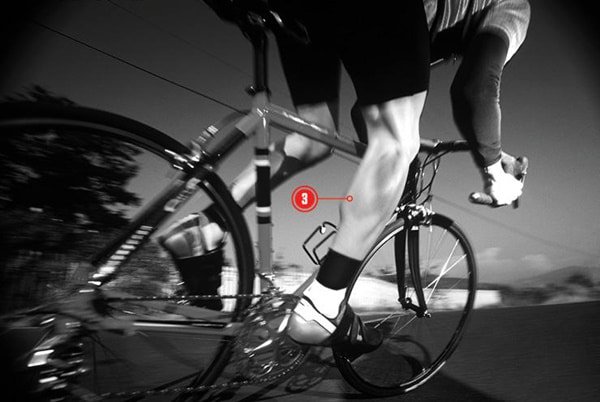
Gastrocnemius & Soleus (AKA: Calves, Pistons)
Your calves, which include the large gastrocnemius muscle just below the back of the knee and the soleus further down, act as stabilizers throughout the pedal stroke and help produce about 20 percent of the power load. They are most active as you sweep down toward, and slightly past, 6 o’clock. Your tibialis anterior (shin muscles on the front of your lower leg), kick in at the end as you point your toes and then draw them back up from 6 to 9 o’clock in a scraping-mud-off-the-shoe motion.
Train ‘em: Let’s face it, nothing says cyclist like diamond-cut calves. Build yours with hanging calf raises:
Stand on one foot on the edge of a step, dumbbell in the same hand as the foot that’s on the step. Lower your heel slightly. Then raise up on the ball of your foot and your toes, as high as comfortably possible. Hold, then slowly return to the start. Repeat for a full set, then switch legs.
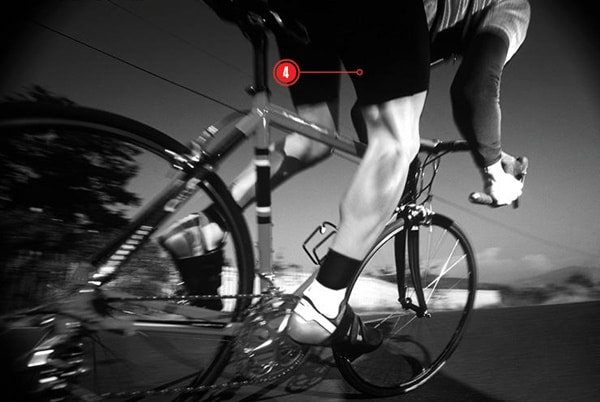
Hamstrings: (AKA: Hammies)
As the muscles that flex your knee, your hamstrings help sweep the pedal back to the 9-o’clock position and contribute about 10 percent of the power needed to turn the crank.
Train ‘em: If you’re like most cyclists, chances are you pay little attention to these non-mirror muscles. Tone them with one easy move that’s also great for your core—the stability-ball hamstring curl.
Lie on the floor on your back, with your legs extended and heels on top a stability ball. Contract your abs, back, and glutes, and press into your heels, lifting your hips off the floor so your body forms a straight line from your heels to your shoulders. Bend your knees and use your heels to roll the ball toward your butt, so your feet are flat on the ball. Pause, return to start, and repeat.
Read: The 3 Safest Ways to Stretch Tight Hamstrings
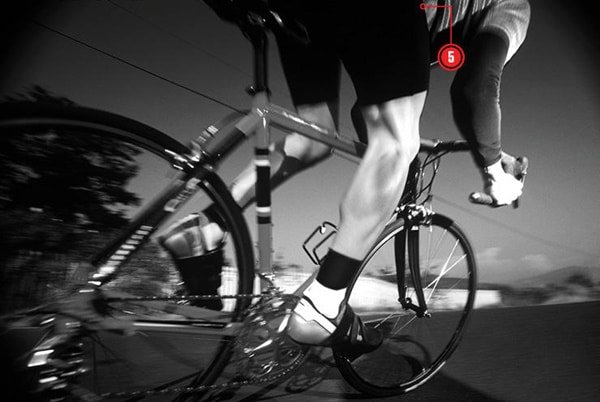
Hip Flexors (AKA: Choose Your Own Nickname!)
The hip flexors are the cycling muscles that run down the front of your hips and help lift the pedal back up to high noon for another go ‘round, accounting for about 4 percent of your pedalling power.
Train ‘em: Nothing puts those leg lifters to work like, well, lifting your legs. Make yours stronger with prone marching.
Lie on your back, hands by your sides. Inhale and bend your left leg 90 degrees at the hip and knee. Exhale and raise your right leg to match. Inhale and lower your left leg, then exhale and lower your right leg. Repeat 10 to 20 times total.
Read: 3 Stretches For Tight Hips
READ MORE ON: Skills strength training programmes workouts

